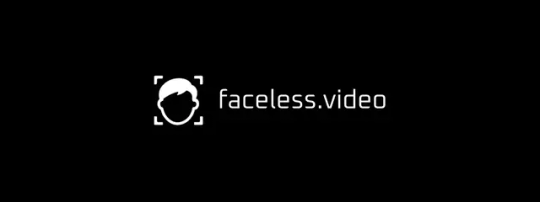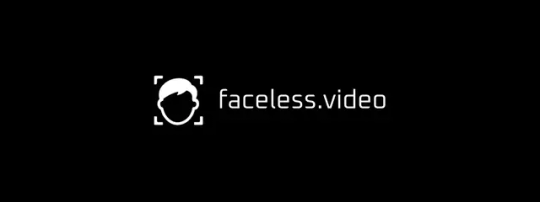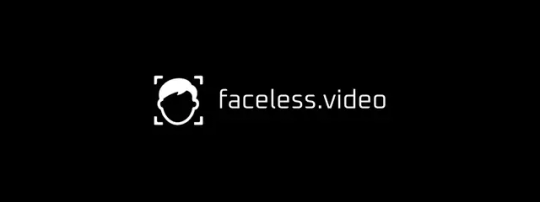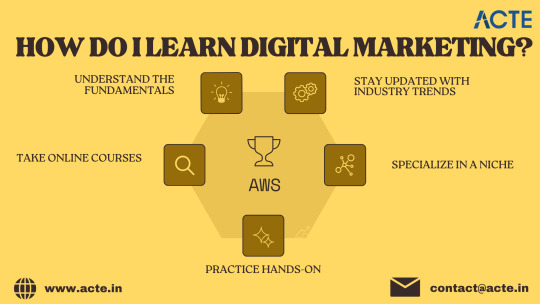#affordable social media marketing tools
Explore tagged Tumblr posts
Text
Sociocosmos: Your Trusted Platform for Boosting Social Media Presence
Are you looking to expand your online reach and engage with a wider audience? Look no further than Sociocosmos. We offer a safe and secure platform where you can purchase real social media followers, likes, and engagement for various platforms like Instagram, Facebook, Twitter, YouTube, and TikTok.
Why Choose Sociocosmos?
Real and High-Quality Engagement: Our followers, likes, and engagement are sourced from real, active users, ensuring authentic growth for your social media profiles.
Safe and Secure Platform: We prioritize your privacy and security. Our platform is designed to protect your personal information and ensure a seamless buying experience.
Instant Delivery and Reliable Service: Enjoy fast and efficient delivery of your purchased services. Our dedicated team is always available to assist you and provide reliable support.
Affordable Prices: We offer competitive pricing options to suit your budget without compromising on quality.
How It Works:
Choose Your Package: Select the social media platform and package that best aligns with your goals.
Place Your Order: Provide your profile link and complete the payment process.
Enjoy Instant Growth: Sit back and watch as your social media presence starts to soar.
Boost Your Brand Visibility and Engagement
With Sociocosmos, you can:
Increase Brand Awareness: Attract new followers and reach a wider audience.
Enhance Credibility: Build trust and credibility with a larger following.
Drive Website Traffic: Redirect social media traffic to your website and increase conversions.
Engage with Your Audience: Foster meaningful interactions and build a loyal community.
Start Your Social Media Journey Today
Don’t miss out on the opportunity to grow your social media presence. Visit Sociocosmos now and explore our wide range of services.
#buy social media followers#increase social media followers#get more social media likes#social media promotion#social media marketing#social media growth#social media engagement#buy Instagram followers#increase Facebook likes#get more Twitter followers#buy YouTube subscribers#TikTok followers#real social media followers#safe and secure platform#instant delivery#reliable service#affordable prices#business social media growth#brand visibility on social media#social media marketing for businesses#social media strategy#social media analytics#buy real Instagram followers#increase Facebook likes organically#get more Twitter followers fast#best social media growth service#affordable social media marketing tools
0 notes
Text
Faceless.Video is the ultimate secret weapon for camera-shy creators, and it's time we dive into why more people aren't talking about it. Imagine producing high-quality videos without ever showing your face! This innovative platform harnesses AI to manage everything from script generation to voiceovers and scene selection. Just input your text, and in minutes, you have a professional video ready to go.
Customization options allow us to adjust voice tones, visual styles, and pacing tailored to our unique brand identity. Say goodbye to cookie-cutter content; our videos can now reflect a personal touch while remaining quick and affordable.
#FacelessVideo #CameraShyCreators

#faceless video#neturbiz#privacy#video#content creation#protection#automation#AI video editing#user friendly platform#high quality videos#script generation#voiceovers#scene selection#customizable videos#affordable production#digital anonymity#marketing#educational videos#social media content#batch processing#production studio#engaging content#editing tips#content creators#features#video updates#video technology#online tools#AI technology#digital content
0 notes
Text
Revolutionize Your Video Production with Faceless AI!
Faceless.Video is a revolutionary tool for content creators who value privacy and ease of use. This platform allows us to produce high-quality videos without showing our faces, making it ideal for those seeking anonymity or digital distance. With its AI-driven automation, we can generate scripts, voiceovers, and select scenes effortlessly—just input your text and watch the magic happen.
Affordability is another key feature; there's no need for expensive equipment or professional talent. Whether we're creating educational content or social media snippets, faceless video supports our needs with constant updates that enhance capabilities.

#FacelessVideo
#ContentCreation
#faceless video#content creation#privacy protection#video automation#AI video editing#user friendly platform#high quality videos#script generation#voiceovers#scene selection#customizable videos#affordable video production#digital anonymity#video marketing#educational videos#social media content#batch processing#video production studio#engaging video content#tech wizard#video editing tips#content creators#video features#scalable solutions#video updates#video technology#online video tools#AI technology#professional results#video content creation
0 notes
Text
#affiliate marketing software#social media marketing software#digital marketing software#affordable marketing software#marketing wordpress plugin#wordpresss marketing plugin#best marketing tool#promotional software
1 note
·
View note
Text

SEO tools are actively used by organizations of all types and sizes. Most of these products offer a free trial period, allowing you to try them out before choosing one.
#SEO tools#SEO tool#SEO tools 2023#trending SEO tools#digicomet#digital marketing#social media marketing wellington & christchurch#digital marketing wellington & christchurch#seo services#local seo service#local seo services nz#seo service#affordable seo services christchurch#digital marketing agency in christchurch
0 notes
Text

#Explosion Digital is a leading Digital Marketing agency in the London#UK. We help you to grow your business successfully with Marketing Service and Website desin services. There are 3 main reasons your website#seo agencies london#website design london#wordpress web design london#web design london#local seo services london#seo agency uk#affordable seo services uk#social media marketing agency uk#digital marketing agency uk#social media agency uk#ppc agency london#For more details click here#https://explosiondigital.com/why-are-ai-content-writing-tools-bad-for-seo/
0 notes
Text
WHY DYSTOPIA MUST BE BORING TO SUCCEED
The "Boring Dystopia Strategy" is a highly strategic and often subtle method employed by those in power to create an enduring, all-encompassing authoritarian government. The genius of this approach is that it doesn't look like a dystopia at first glance. Each step toward oppression is disguised as a necessary solution to a societal problem, creating a series of small, unassuming changes that collectively transform society into a high-surveillance, debt-ridden, and highly regulated landscape. The result is a quiet but relentless march towards a government structure that controls nearly every aspect of daily life, cloaked in the language of safety, responsibility, and "public good."
Key Components of the Boring Dystopia Strategy
Enhanced Surveillance as Crime Prevention Surveillance systems are marketed as tools to make communities safer. The rationale is straightforward: if there are cameras everywhere, criminals are less likely to act. At first, this seems like a good idea. However, as surveillance expands, it reaches a point where privacy no longer exists—every action and interaction is tracked and recorded. People's movements, purchases, conversations, and even thoughts (through social media and data mining) become data points in a government database. The population is conditioned to accept surveillance under the guise of crime prevention, even though the surveillance network eventually exists to deter any resistance to the growing system of control.
Financial "Disincentives" as a Form of Behavior Control Insurance companies, incentivized by government policies, implement "dynamic" pricing models that penalize risky behavior. Drivers with even minor infractions, young drivers, or anyone with imperfect credit face skyrocketing insurance costs. While it’s presented as a means to reward safe drivers and reduce accidents, it’s ultimately a method of forcing people into line. Over time, these small financial penalties accumulate, and as people find themselves unable to afford the rising costs, they are pushed further into debt or forced to depend on the very government that created the conditions of their hardship.
The Department of Bureaucracy: A Growing Web of Useless Jobs New laws and regulations are introduced to solve every conceivable social issue, resulting in bloated departments filled with superfluous workers whose roles add no real value to society. The justification is often to create jobs and stimulate the economy, but these positions end up creating layers of bureaucracy that slow down meaningful progress. This web of inefficiency puts financial strain on both the government and the people, leading to higher taxes and fees. With each new law or regulation, the cost of compliance grows, straining both businesses and individuals who can't afford to play by an ever-increasing list of rules.
Rising Cost of Living as an Inevitable "Economic Shift" As government regulations add costs to every industry, prices naturally increase. This is explained away as the cost of progress or as an unfortunate byproduct of addressing critical social issues, like "ethical sourcing" or "green initiatives" that are actually revenue-boosters for corporations. As inflation rises and wages stagnate, the lower class is squeezed financially. Each attempt to improve their situation—whether by taking a second job or reducing expenses—is offset by further price increases or surprise taxes. This creates a cycle where economic mobility is nearly impossible, locking the lower class in place.
Debt as a Tool for Control As the cost of living rises, debt becomes unavoidable for many. Loans, credit cards, and financing options are promoted as solutions, pushing people into a system of lifelong debt repayment. With growing financial obligations and little hope of ever breaking free, individuals are forced to work harder, often taking on additional jobs, which leaves them with less time and energy to question or resist the system. Debt chains the population to the very system that oppresses them, creating a sense of dependency on government stability, even as that stability is the source of their financial despair.
The Final Stage: Disempowerment Disguised as "Efficiency"
As the population is weakened by financial strain, endless surveillance, and a tangled bureaucracy, the final stage involves introducing measures to "simplify" governance. This might mean fewer elected officials, streamlined decision-making processes, and the merging of regulatory bodies for "efficiency." In reality, this final stage centralizes power even further, leaving those at the top with almost unchecked authority, a situation that the people, too exhausted and indebted to resist, accept as necessary.
The Boring Dystopia Strategy works because it does not announce itself as an authoritarian takeover. Instead, it subtly shifts the balance of power by presenting every oppressive measure as a solution to a social ill. And because each step is introduced slowly, over decades, the population becomes accustomed to the new reality, accepting surveillance, debt, and regulation as the normal costs of a safe and responsible society. By the time people realize the extent of their powerlessness, the dystopian state is fully entrenched, with every escape route closed off.
12 notes
·
View notes
Text

What are the advantages of digital marketing? Digital marketing offers numerous advantages over traditional marketing methods. Some of the key benefits include: 1. Cost-Effectiveness: Digital marketing is often more affordable than traditional marketing channels like TV, radio, and print. Campaigns can be tailored to fit any budget, allowing small businesses to compete with larger companies. 2. Measurability: Digital marketing provides detailed analytics and reporting, enabling marketers to track the performance of their campaigns in real time. Metrics such as click-through rates, conversion rates, and return on investment (ROI) are easily measurable. 3. Targeted Reach: Digital marketing allows precise targeting based on demographics, interests, behavior, and location. Platforms like Google Ads and Facebook Ads enable marketers to reach specific audiences that are more likely to be interested in their products or services. 4. Flexibility and Agility: Digital marketing campaigns can be quickly adjusted based on performance data. Marketers can experiment with different strategies and tactics without significant delays or costs. 5. Global Reach: The Internet provides access to a global audience, enabling businesses to expand their market beyond local or regional boundaries. E-commerce platforms and international shipping options further support global expansion. 6. Enhanced Engagement: Digital marketing channels, such as social media, email, and content marketing, facilitate direct interaction with customers. Two-way communication allows for better customer relationships and improved customer satisfaction. 7. Personalization: Digital marketing tools allow for personalized marketing messages based on user behavior and preferences. Personalization can significantly improve the customer experience and increase conversion rates. 8. Higher Conversion Rates: Digital marketing strategies like search engine optimization (SEO), pay-per-click (PPC) advertising, and social media marketing can drive highly targeted traffic to websites. This targeted traffic is more likely to convert into leads or sales. 9. Better Customer Experience: Digital marketing enables businesses to provide a seamless and integrated customer experience across various online channels. Techniques such as remarketing and automated email responses can enhance the overall customer journey. hashtag#Overall, digital marketing offers a versatile, efficient, and effective way for businesses to reach and engage with their target audience, leading to increased brand awareness, customer loyalty, and revenue growth.
15 notes
·
View notes
Text
Blog Post Due 10/10
What is racialization through interpellation? What is its impact?
Racialization through interpellation shows that race is not something that is biological but something that is constructed through views of society and through culture. It explains how society teaches us to notice features that are racially marked like one's skin or eye color. Also, it's something we unconsciously identify in people. This varies by culture, is constantly shifting and an example we see in "The Social Media Handbook" is when in the 18th century, the English people would describe Irish people as "black" and "tawny" to describe the Hottentots people of Africa. This goes to show race is a concept that is shaped by social norms and is constantly changing
2. How has the rise of internet access and smartphones impacted race and social media?
African American and Latino communities have received greater access to internet and phone access, which has helped close the digital divide. Referring to closing the gap between communities that have access to modern communication technologies and those that do not. In the early days of cyberspace, non-whites had much less access to the internet. Smartphones played a crucial role in closing the gap because of the fact they are much more affordable than computers and they started to become really mainstream/accessible. In 2010, 70 percent of African Americans and Latinos that speak english were on social media apps. Which is higher percentages than white online users, indicating the internet became more racially diverse.
3. What is the recent shift towards multi-culturalism we have seen?
Explained in Race after Technology, mass marketing has moved toward ethnic niches that have a play on diversity. A good example used are the Netflix movie/show recommendations that come up on the screen, and these certain posters like those that include black cast members, can entice and they are meant to target the black audience to get them to click and check out the movie/show. Platforms like Netflix, it is not like they are asking their users about their race, instead they use algorithms like what you watched previously, what you have searched to indicate who is attracted to certain cast movie posters.
4. What does Daniels say about why you should study white supremacy online?
Jessie Daniels says that in her view, the reason you should study white supremacy online is to challenge it. She argues the reason you should care about white supremacy is because "racial vitriol" is easy to find online. There also has been a huge shift, anyone with internet connection: a sixth grader doing a report, a potentially violent skinhead, can easily stumble upon white supremacy online. It is a complicated problem because ascertaining how young people make sense of white supremacy online/how it affects them and distinguishing between those who produce it white supremacy, those who look for it, or who find it by accident is difficult to determine. The idea of white supremacy online better informs our knowledge of social movements, society, race, the internet and how young people are educated in this digital age.
Benjamin, R. (2019). Race After Technology: Abolitionist Tools for the New Jim Code.
Daniels, J. (2009). Combating Global White Supremacy in the Digital Era.
Hungsinger, J., & Senft, T. (2014). The Social Media Handbook.
6 notes
·
View notes
Text

Sociocosmos: Your Trusted Platform for Boosting Social Media Presence
Are you looking to expand your online reach and engage with a wider audience? Look no further than Sociocosmos. We offer a safe and secure platform where you can purchase real social media followers, likes, and engagement for various platforms like Instagram, Facebook, Twitter, YouTube, and TikTok.
Why Choose Sociocosmos?
Real and High-Quality Engagement: Our followers, likes, and engagement are sourced from real, active users, ensuring authentic growth for your social media profiles.
Safe and Secure Platform: We prioritize your privacy and security. Our platform is designed to protect your personal information and ensure a seamless buying experience.
Instant Delivery and Reliable Service: Enjoy fast and efficient delivery of your purchased services. Our dedicated team is always available to assist you and provide reliable support.
Affordable Prices: We offer competitive pricing options to suit your budget without compromising on quality.
How It Works:
Choose Your Package: Select the social media platform and package that best aligns with your goals.
Place Your Order: Provide your profile link and complete the payment process.
Enjoy Instant Growth: Sit back and watch as your social media presence starts to soar.
Boost Your Brand Visibility and Engagement
With Sociocosmos, you can:
Increase Brand Awareness: Attract new followers and reach a wider audience.
Enhance Credibility: Build trust and credibility with a larger following.
Drive Website Traffic: Redirect social media traffic to your website and increase conversions.
Engage with Your Audience: Foster meaningful interactions and build a loyal community.
Start Your Social Media Journey Today
Don’t miss out on the opportunity to grow your social media presence. Visit Sociocosmos now and explore our wide range of services.
#buy social media followers#increase social media followers#get more social media likes#social media promotion#social media marketing#social media growth#social media engagement#buy Instagram followers#increase Facebook likes#get more Twitter followers#buy YouTube subscribers#TikTok followers#real social media followers#safe and secure platform#instant delivery#reliable service#affordable prices#business social media growth#brand visibility on social media#social media marketing for businesses#social media strategy#social media analytics#buy real Instagram followers#increase Facebook likes organically#get more Twitter followers fast#best social media growth service#affordable social media marketing tools
0 notes
Text
The Commercial Witch
This post is a little unlike my others, but it is one that I find interesting and have been wanting to make for a while, if simply to talk about it as more of a think piece. Since I began actively practicing witchcraft, I've been seeing a rise in companies and brands promoting and selling things related to witchcraft, as well as a host of social media influencers making witchy aesthetic posts with elaborate altars and setups. While there is nothing inherently wrong with either of those, it has led to a side effect that I've seen mentioned offhandedly but not really talked about much: the commercialization of witchcraft.
Influence
While I love the aesthetic posts as much as the next witch (both because they are pretty and organized well, and because it sometimes sparks ideas of my own), I don't so much love the implications such posts give about the nature of witchcraft in the modern day.
I've seen many new witches ask what crystals they have to buy, and what plants they should start with, and how to make a grimoire look picture perfect, and where to buy the best tools, and is a drawer full of divination tools enough or do they need more? All perfectly valid and genuine questions for those still learning, that deserve full and honest answers. But I've also seen just as many posts from people wanting to learn witchcraft that lament that they could never afford it, and that is where the problem I feel lies.
Posts from witchcraft influencers and those who simply like the aesthetic and are not actual witches imply through what they show that it is the things that make the witch rather than the person themself - and that the only way to harness magical ability is through items rather than practice and skill. So, not knowing any better, new witches pick up on that and believe the same.
To be clear: material goods are not a problem. If dozens of tarot decks make you happy, go ahead. If collecting crystals adds value to your practice, do so. If you find a box full of A-Z herbs useful, absolutely get it! My problem comes with the fact that none of these collections are necessary to becoming a witch, and it is often presented as such. The earliest witches we have records of did not have access to the wide range of spices and herbs we do. They did not have crystals, minerals, and stones from around the world to harness energy. They often did not have libraries of books to learn from - and likely, many would not have been able to read even if they did. They (usually) did not have specially made tools for their craft. They used what was available, they used what they knew and made and grew themselves, they learned from each other or practice or observation, and they used items that they already owned.
And so can we.
Capitalism and Witchcraft
As the other half of this topic, the relationship between capitalism and witchcraft is also concerning to me for a variety of reasons. I have noticed an increase in regular stores selling witchcraft goods in kits and little box sets and the like, and upon inspecting them, most are... inadequate, at the least. Generally, they are either very surface-level or very appropriative - neither of which should be something we should be thrilled about.
From selling white sage for 'smudging' and a cheap tarot deck in Sephora's Starter Witch Kit to TJ Maxx selling herb kits, mini mortars and pestles, and cheap divination decks as a Halloween gimmick, large companies are trying to cash in on the renewed interest in witchcraft. The increase in interest itself is not offensive - many witches I know appreciate the more open acceptance of a practice many of us have had to keep hidden for fear of judgment and safety. However, with large brands treating it like a trend without doing research or marketing it appropriately, it can cause harm.
I made a post recently about cultural appropriation in witchcraft, and two of the signs of appropriation are lacking respect for a practice and commercializing it. Large brands marketing things like tarot decks as fun games to play with your friends ignores the rich historical and cultural context attached to the cards, as well as the spiritual significance they take on for many readers. By giving surface-level books on how to read them, or failing to provide books at all, they encourage a lack of knowledge in the subject - another red flag for appropriation. By selling herb kits for 'smudging' containing things like white sage or palo santo, they are taking from closed practices and traditions that were often made illegal to those from whom they originated (yet another red flag), and teaching newcomers to as well.
This isn't to say a new witch cannot buy their first items from brands like this - many do not have the option of locally sourcing their materials from small businesses that put in the work to sell items respectfully, as these are still often far and in between. There may also be safety reasons or other reasons why they are unable to acquire tools in any other way, and my intent is not to pass judgment on those who do for whatever reason. My intent is to urge new witches to look beyond the surface of what these companies present, and to critique the companies for selling these items the way they do to begin with.
Some of these companies have removed their items due to backlash - as Sephora did with their kit - while others simply do not care. And, there is nothing we as individuals can do to stop the companies from trying, without organized collective action; and I do not believe our communities are at a place where that effort can be made in earnest just yet, though hopefully in the future they will be.
Moving Forward
So, from where I stand, it is up to us as consumers of both media and materials to think critically about what we are consuming. Whether that be questioning assumptions we make based on what we see online, or questioning the ethics of what we are purchasing and where it comes from.
Our lines will look different depending on where we are, what we practice, and the resources available to us. All I urge people to do is to do what they can to be intentional in their choices, and that if consuming from large companies and social media to put in the work to deepen the surface-level understanding they offer and grow on your own.
24 notes
·
View notes
Text
Video Automatically Generated by Faceless.Video
Agentic AI signifies a groundbreaking evolution in artificial intelligence, transitioning from reactive systems to proactive agents.
These advanced AI entities possess the ability to comprehend their surroundings, establish goals, and operate independently to fulfill those aims. In this video, we delve into how agentic AI is revolutionizing decision-making processes and taking actions autonomously without human oversight.
A prime example includes environmental monitoring systems that identify and respond to threats such as forest fires. Discover the implications of this technology on our future!

#AgenticAI
#ArtificialIntelligence
#faceless video#content creation#privacy protection#video automation#AI video editing#user friendly platform#high quality videos#script generation#voiceovers#scene selection#customizable videos#affordable video production#digital anonymity#video marketing#educational videos#social media content#batch processing#video production studio#engaging video content#tech wizard#video editing tips#content creators#video features#scalable solutions#video updates#video technology#online video tools#AI technology#professional results#video content creation
0 notes
Text


Empire’s radical monopoly over life
Ivan Illich was a prominent radical intellectual in the 1970s, but aside from his radical critique of schooling, is not well-known today. For Illich, modern schooling was only one of the many ways that dependence was being entrenched—a dependence not only on capitalist production and consumption, but on a whole violent, industrialized, disciplined, and controlled way of life. His concept of radical monopoly points to something more systematic than the control over a particular market by a particular firm. Instead, radical monopoly gets at the way that Empire monopolizes life itself: how people relate to each other, how they get around, how they get their sustenance, and the whole texture of everyday life. A world built for cars forces out other ways of moving, and modern building codes and bylaws make it impossible and illegal for people to build their own dwellings, or even to live together at all if they cannot pass as a nuclear family. Modern medicine does not just create a new way of understanding the body: its scientific understanding is premised on a radical monopoly over health, and the subjugation (or commodification) of other healing traditions. To be healthy under Empire is to be a properly functioning, able-bodied, neurotypical individual capable of work, and to be sick often means becoming medicalized: isolated, confined, and dependent on strangers and experts. Law, policing, and prisons monopolize the field of justice by enforcing cycles of punishment and incarceration, forcing out the capacity of people to protect each other and resolve conflicts themselves. The rise of industrial agriculture has been accompanied by a loss of the convivial relations surrounding subsistence: the connection to the growing and processing of food, the intimacy with ecosystems and seasons it entails, and the collective rituals, celebrations, and practices that have accompanied these traditions. Empire’s infrastructure induces dependence on forms of production, specialized knowledge, expertise, and tools that detach people from their capacities to learn, grow, build, produce, and take care of each other.
Since Illich wrote, these monopolies have folded into ever more diffuse and generalized forms of control, sunk deeper into the fabric of life. Deleuze called this new form of power taking shape over the course of the nineteenth and twentieth centuries “control societies.”[102] Rather than telling people exactly what to do, this mode of power regularizes life, calling forth certain ways of living and feeling, and making other forms of life die. Surveillance no longer ends when one exits a particular institution: through social media, smartphones, browsing histories, and credit cards, surveillance is ubiquitous, continuous, and increasingly participatory. We are enjoined to share, consume, and express ourselves, and every choice feeds back into algorithms that predict our habits and preferences with ever increasing precision. The performance of self-expression is constantly encouraged, and as the Institute for Precarious Consciousness writes, “Our success in this performance in turn affects everything from our ability to access human warmth to our ability to access means of subsistence, not just in the form of the wage but also in the form of credit.”[103] Under this apparatus, there is little room for silence, nuance, listening, exploration, or the rich subtleties of tone and body language. Anything too intense or subversive is either incorporated or surgically removed by security, police, or emergency personnel. Class, anti-Blackness, Islamophobia, ableism and other structured forms of violence are coded into the algorithms that make everyone a potential terrorist, thief, or error. Even those who are supposed to enjoy the most—those who can afford the newest screens and the most expensive forms of consumption—are inducted into a state of nearly constant distraction, numbness, and anxiety.
Perpetual individualization obscures the crushing collective effects of Empire. When this form of control is working, interactions are hypervisible, superficial, predictable, and self-managed. To be constantly mistrusted and controlled is also to be detached from one’s own capacity to experiment, make mistakes, and learn without instruction or coercion. To internalize the responsibilities of neoliberal individualism is to sink into the mesh of control and subjection. The responsible economic subject owns her own property, pays her own debts, invests in her future, and meets her needs and desires through consumption. She is individually responsible for her health, her economic situation, her life prospects, and even her emotional states. These forms of subjection make it difficult to imagine—let alone participate in—collective alternatives. From the dependence on armed strangers to resolve conflicts, to the hum of an extraction-fuelled world, to the glow of screens that beckon attention, to the stranglehold of policy and bureaucracy, to the intergenerational violence and abuse that permeate lovers and families, Empire is constantly entrenching dependence on a world that makes joy, trust, and responsibility difficult.
It is not a question of revealing this to people, as if they are dupes. Struggling amid these forms of control means grappling with their affective hold on us and our daily lives. Anxiety, addiction, and depression are not merely secrets to reveal or illusions to dispel. Preaching about Empire’s horrors can stoke cynicism or ironic detachment rather than undoing subjection. One can still feel bound and depleted, despite one’s awareness. Empire’s subjects are “free” to be mistrustful and resentful of the system under which they live. One can hate Empire as much as one wants, as long as one continues to work, pay rent, and consume. There is no simple correspondence between intentions and actions, as if the problem is simply figuring out what to do and doing it. Undoing subjection is not about conscious opposition, or finding a way to be happy amidst misery. Challenging Empire’s radical monopoly over life means interrupting its affective and infrastructural hold, undoing some of our existing attachments and desires, and creating new ones.
#joy#anarchism#joyful militancy#resistance#community building#practical anarchy#practical anarchism#anarchist society#practical#revolution#daily posts#communism#anti capitalist#anti capitalism#late stage capitalism#organization#grassroots#grass roots#anarchists#libraries#leftism#social issues#economy#economics#climate change#climate crisis#climate#ecology#anarchy works#environmentalism
9 notes
·
View notes
Text
Learning Digital Marketing: Tips and Resources for Beginners
In the current digital world, it is critical for both individuals and organisations to grasp the art of digital marketing. Entering the world of digital marketing can seem like a difficult trip because of the vast diversity of internet platforms and tactics at our disposal. However, anyone can effectively leverage the transformative power of digital marketing if they have the correct tools and attitude. We'll explore the fundamentals of digital marketing in this in-depth guide, as well as many learning resources and practical advice for success in this ever-changing field. A reputable Top Digital Marketing Course in Coimbatore can provide the knowledge and abilities needed for those aspiring to become industry professionals to successfully traverse this dynamic environment.

Grasping the Core Principles
Embarking on your digital marketing odyssey requires a firm grasp of the foundational principles. Digital marketing encompasses a multifaceted landscape comprising social media marketing, search engine optimization (SEO), content marketing, email marketing, pay-per-click (PPC) advertising, and beyond. Each facet plays a pivotal role in connecting with and engaging your target audience.
Commence your journey by immersing yourself in the essence and utility of each digital marketing channel. For instance, social media marketing serves as a conduit for businesses to forge connections with their audience across platforms such as Facebook, Instagram, Twitter, and LinkedIn, while SEO serves as the bedrock for enhancing a website's visibility in search engine results.
Embracing Online Learning
One of the most potent avenues for acquiring digital marketing prowess lies in online learning platforms. The likes of Coursera, Udemy, and HubSpot Academy offer an extensive array of courses catering to various facets of digital marketing. Whether you're a neophyte or a seasoned practitioner seeking to augment your skill set, there exists a plethora of courses tailored to meet your requirements.
When perusing online courses, seek out those that proffer a structured curriculum, practical exercises, and industry-endorsed certifications. Many courses also afford opportunities for engagement with instructors and fellow learners, facilitating collaborative learning and knowledge exchange.
Keeping Abreast of Industry Trends
The realm of digital marketing is in a perennial state of flux, characterized by the continual emergence of novel trends and technologies. To maintain a competitive edge, it's imperative to remain abreast of the latest industry trends and best practices.
Cultivate a habit of staying attuned to reputable digital marketing blogs, subscribing to industry newsletters, and participating in webinars and conferences. These fountains of wisdom furnish invaluable insights into nascent trends, innovative strategies, and illuminating case studies spotlighting successful digital marketing endeavors. Finding the appropriate abilities is just as vital as selecting the appropriate tactics and methods. It can be very beneficial in this situation to register in the Digital Marketing Online Certification.

Enacting Hands-On Practice
While theoretical knowledge serves as a springboard, the crucible of hands-on experience is indispensable in mastering digital marketing. Establish your own blog or social media platforms to experiment with diverse tactics and strategies. Translate the theoretical underpinnings gleaned from online courses and industry resources into tangible outcomes through real-world projects.
Embrace a spirit of experimentation, and employ analytical tools to scrutinize your endeavors and glean actionable insights. The data-driven nature of digital marketing empowers you to refine your strategies iteratively based on empirical evidence.
Cultivating Specialization
As you traverse the digital marketing landscape, contemplate delving into a specialized niche aligned with your passions and proficiencies. Specialization enables you to delve deeper into a specific facet of digital marketing, be it SEO, social media advertising, email marketing, or content creation.
Becoming a connoisseur in a niche not only demarcates you from the crowd but also engenders myriad opportunities for career advancement. Businesses perpetually seek specialists capable of proffering astute insights and delivering tangible results within their niche domain.
Conclusion
Journeying towards mastery in digital marketing entails a multifaceted expedition characterized by unwavering dedication, perpetual learning, and adaptability. By internalizing the core principles, engaging with online learning platforms, staying abreast of industry trends, enacting hands-on practice, and cultivating specialization, you can forge a path towards proficiency in this dynamic arena.
Remember, digital marketing is an art imbued with nuance and dynamism. Embrace the ethos of experimentation and iteration, and chart a course tailored to your unique objectives and target audience. With perseverance and a strategic approach, you can harness the transformative potential of digital marketing to propel your endeavors to unprecedented heights in the digital realm.
#tech#training#digital marketing#digital marketing company#digital marketing course#email marketing#online marketing#search engine optimization#seo#seo services
12 notes
·
View notes
Text
The Advantages of Local SEO: How to Optimize Your Business for Local Search
About SEO

Search engine optimization (SEO) originated in the 1990s, when the internet was growing and search engines were being developed.Search engine optimization is the practice of improving a website's visibility and ranking in search engine results pages (SERPs). The goal of Search Engine Optimization is to increase the amount of traffic a website receives from search engines, which can lead to more clicks and potential customers. Here are some key components:
1. Google My Business (GMB)
Claim and optimize our GMB listing.
Ensure our business name, address, and phone number (NAP) are accurate.
Add business hours, photos, and a description of our services.
2. Local Keywords
Research and incorporate local keywords in our website content, meta titles, and descriptions.
To locate pertinent terms, use tools such as Ahrefs or Google Keyword Planner..
3. Citations
Ensure our business is listed on relevant local directories (Yelp, Yellow Pages, etc.).
Maintain consistency in our NAP across all platforms.
4. Reviews
Encourage satisfied customers to leave positive reviews on Google and other platforms.
Respond to reviews to engage with customers and show our business's responsiveness.
5. Local Content
Create content that resonates with our local audience (e.g., blog posts about local events).
Use local news, events, and activities to draw in traffic.
6. Mobile Optimization
Ensure our website is mobile-friendly, as many local searches are conducted on mobile devices.
7. Backlinks
Build backlinks from local websites, such as local news outlets, blogs, or community organizations.
8. Social Media
Involve with the local community through social media platforms.
Share local content and interact with customers to build a local Attendance.
9. Schema Markup
Use local business schema markup to help search engines understand our business details better.
10. Monitoring and Analytics
Track our local search performance using tools like Google Analytics and GMB insights.
Adjust our strategy based on what works best for your local audience.
Advantages of SEO
Enhanced Visibility:
Local SEO makes your company show up in local search results, which makes it simpler for local potential clients to locate you.
Targeted Traffic:
It attracts customers who are actively searching for services or products in your location, leading to higher conversion rates.
Cost-Effective Marketing:
Compared to traditional advertising, local SEO is often more affordable and can provide a better return on investment.
Enhanced Google My Business Presence:
Optimizing your local SEO improves your Google My Business listing, which can boost your visibility in local searches and Google Maps.
Community Engagement:
Local SEO encourages businesses to engage with their community, fostering relationships that can lead to repeat business and referrals.
Mobile Optimization:
Many local searches are performed on mobile devices, and local SEO strategies can help capture this on-the-go audience.
Improved Brand Credibility:
Ranking well in local search results can enhance your brand’s credibility and trustworthiness among potential customers.
Competitive Advantage:
Focusing on local SEO can help small businesses compete with larger companies that may dominate general search results.
Improved User Experience:
Local SEO frequently entails making your website more search engine friendly for local queries, which can enhance both the user experience and overall site performance..
Customer Insights:
Engaging in local SEO can provide valuable data about your audience’s preferences and behaviors, helping you tailor your offerings.
Best Practices for SEO Success
Stay Updated:
SEO is constantly evolving. Follow industry news to keep up with algorithm changes and trends.
Analyze Your Performance:
Use tools like Google Analytics and Google Search Console to monitor traffic and understand user behavior.
Be Patient:
SEO is a long-term strategy.Results might not be seen right away, but perseverance is rewarded..
Conclusion
In SEO is crucial for anyone looking to enhance their online presence. By understanding the fundamentals and implementing best practices, you can drive traffic, increase visibility, and ultimately grow your business. To learn more about Local SEO Sign up for the Advanced Digital Marketing program provided by Zypher Learning.
#local seo#advantages of local seo#search engine optimization#digital marketing#advantages of seo#google my business#business listing#mobile optimization#social media#social media marketing#business optimization
3 notes
·
View notes
Text
Title: "Gen Z Hustle: How Side Gigs and Digital Innovation are Shaping Kenya's Youth Culture"
Introduction In the bustling streets of Nairobi, young Kenyans are busy making their mark in innovative ways that go beyond traditional careers. The rise of digital technology and Kenya’s rapidly evolving economic landscape have cultivated a unique “side-hustle culture” among Generation Z, who are actively reshaping work, community, and creativity. From influencing on social media to e-commerce and even venturing into cryptocurrency, these young hustlers are defining a new Kenyan dream that is all about resilience, creativity, and financial independence.
Side-Hustles in the Age of Social Media One of the most prominent changes in Kenya’s youth culture is the significant shift from relying solely on formal employment to embracing digital side hustles. On Instagram, Twitter, and TikTok, young Kenyans are building personal brands as influencers, marketers, and content creators. This trend is largely driven by the power of social media platforms, where personalities like Azziad Nasenya and Flaqo have transformed social media virality into flourishing careers.
Platforms like TikTok and Instagram allow young Kenyans to reach broad audiences with content that resonates—comedy skits, motivational videos, makeup tutorials, and dance challenges. With brands now recognizing the influence of digital personalities, many Kenyan influencers are finding opportunities to collaborate with companies for product endorsements and advertisements. These partnerships bring a sense of visibility and empowerment that has been less accessible in traditional industries.
For 24-year-old David Mwangi, a content creator and social media strategist, the allure of influencing lies in its accessibility and potential for growth. “You don’t need a big budget to get started; you just need creativity,” he explains. David’s experience reflects the sentiment of many Gen Z Kenyans who see social media not just as a pastime but as a pathway to sustainable income.
The E-commerce Boom and the Rise of Small Online Shops In addition to influencing, e-commerce has become a major outlet for Kenyan youth looking to earn extra income. Platforms like Jumia, Kilimall, and Facebook Marketplace provide easy avenues for young entrepreneurs to start online businesses, selling anything from thrifted clothes and beauty products to locally made crafts and accessories. Kenya’s mobile payment system, M-Pesa, has also simplified transactions, allowing e-commerce to thrive even without widespread use of credit cards.
With rising unemployment rates and limited job opportunities, many young Kenyans are using digital tools to build businesses from scratch. Some youth groups have formed collectives to sell items in bulk, often buying directly from manufacturers or importing from abroad to resell at a profit. This trend, known locally as biashara za mtaa (local businesses), has created a bustling informal economy that operates largely online.
For 23-year-old Aisha Ahmed, the journey started with a Ksh 5,000 loan from her older brother. Now, she runs an online shop that specializes in selling affordable, stylish handbags through Instagram. “People think starting a business requires a lot of capital, but what really matters is finding something people need and building a brand around it,” she says.
Crypto, Forex, and the Financial Revolution Another intriguing aspect of Kenya’s Gen Z hustle culture is the growing interest in cryptocurrency and Forex trading. Although controversial, the allure of quick profits and financial independence has drawn many young people into these new financial frontiers. Kenya’s tech-savvy youth have quickly adapted to apps like Binance and Paxful, learning the intricacies of cryptocurrency trading and often mentoring each other online.
Crypto’s appeal among Gen Zers lies in its promise of empowerment and financial freedom—an opportunity to circumvent traditional banking systems. However, the lack of regulation and high risks involved have left many young Kenyans facing steep learning curves and financial losses. Despite the volatility, online communities and forums dedicated to Forex and crypto trading continue to grow, attracting young people with a “high risk, high reward” mentality.
Karanja, a 22-year-old business student, views crypto as a game-changer: “It’s the future of money,” he asserts. He has spent months learning about blockchain technology and considers it a long-term investment. Karanja’s experience highlights the optimism surrounding digital currency in Kenya, despite the risks and controversies.
Challenges Facing the Digital Hustlers While side-hustle culture has opened new opportunities, it comes with significant challenges. The competitive nature of digital influencing and e-commerce can be cutthroat, with many young people finding it hard to stand out. Mental health issues, such as stress and burnout, are becoming common among young hustlers as they juggle multiple gigs alongside their education or formal jobs.
For those in crypto and Forex, the risks are even higher. Cases of scams and Ponzi schemes have left many young investors in debt, leading some to lose faith in the industry altogether. The lack of regulation around cryptocurrency also means that youth are vulnerable to fraudsters, who often take advantage of their desire for quick financial gains.
The New Face of the Kenyan Dream Despite the challenges, side-hustle culture has become a defining feature of Gen Z in Kenya. This trend signifies a shift in how young Kenyans view success, replacing the traditional path of formal employment with a vision that values independence, innovation, and adaptability. It’s a cultural revolution rooted in digital innovation, resilience, and the determination to succeed on their own terms.
For Kenyan youth, the hustle is more than just a means to an end—it’s a way to redefine their place in society. As Aisha puts it, “It’s not just about making money; it’s about taking control of your future.”
4 notes
·
View notes